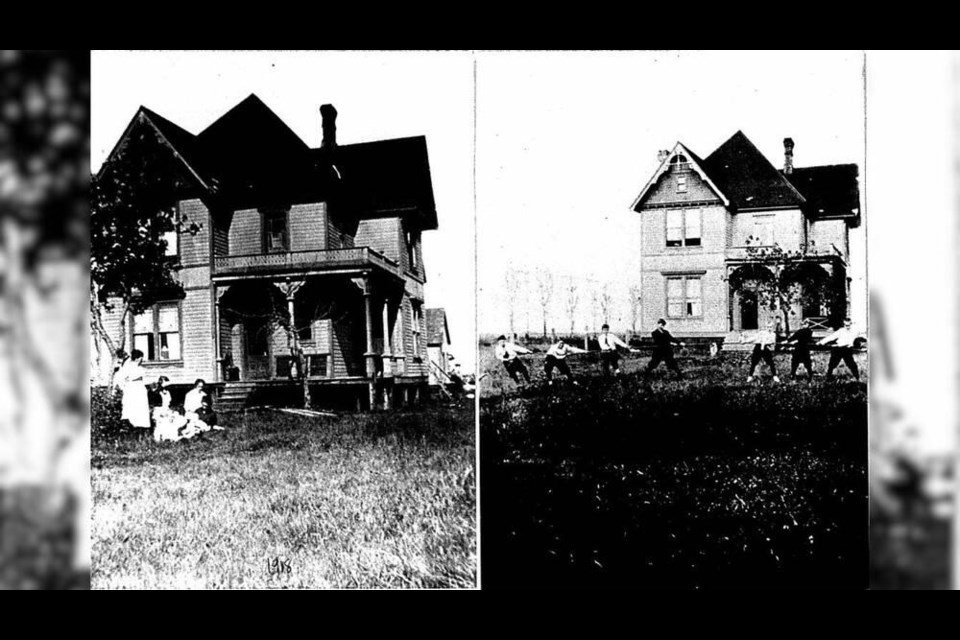Many years ago — before Richmond even became Richmond — a hunting lodge stood completely isolated on the mudflats of Lulu Island.
Its owner, Sir Edward Walter, had taken it upon himself in the 1870s to build a residence two miles inland from the Fraser River in the area now known as No. 3 Road and Westminster Highway.
Walter was the former owner of the London Times who helped colonize the far corners of the British Empire.
Why and how the wealthy Englishman ended up on Lulu Island remains a mystery to this day.
There were never any reported tragedies in the house, but residents regardless felt insecure and apprehensive as they lived with mysterious footsteps echoing through the stairwells and loud clanging through the walls.
An unnamed man wearing a derby hat would also watch those who slept in the south bedroom.
“When I became fully alert he would disappear and the room would be dark,” wrote Arnold Jones, who moved into the lodge with his family during his childhood in 1916.
Jones’ father, Charles Jones, would later bring water to Richmond.
Deserted by owner
The house, a stunning Victorian gingerbread building with lavish details including multi-coloured glass panels and impressive wooden staircases, was connected to other buildings in a manner “reminiscent of New England farmsteads,” wrote Jones.
“A servant could walk from the dining room, past the dairy, through the big kitchen, past the toilet and into the storage building without being exposed to mud or weather.”
According to Walter’s agents, he had gotten all construction materials and furnishings floated to the site on the ditches.
Despite Walter’s best efforts, the living arrangement did not impress his new bride.
“Within three months she became totally disenchanted with the mud, rain and loneliness and presumably returned to England, leaving her knight equally disenchanted, so much so that he soon moved out of the house and into the barn,” wrote Jones.
“Soon he also left, never to return.”
Walter’s legacy would include the house’s ornate furnishings and stacks of the London Times hidden in the attic.
The Joneses later sold the place to Edmund J. Berry and his family in 1921 but kept 10 acres of the property including the servants’ quarters.
In the new seven-room house, Jones recalled an eerie encounter one night while eating smuggled food and reading The Katzenjammer Kids comic strip under an oil lamp.
“Engrossed in the comics while I ate, I don’t know what made me turn my head to look at the old door, three feet to my right,” he wrote.
“As I looked, through the inch-wide crack under the door came a walking stick or cane with a brass tip. It protruded at least two feet, moved slowly from side to side, and then withdrew.”
By the time Jones found his father downstairs, all signs of paranormal activity were gone.
Years later, Jones would find out that he was not the only one who had met the man with the derby hat. Not only had the youngest brother of the Berry family seen the same man in the same bedroom, but Jones’ mother had also admitted seeing the man while napping on a couch in the kitchen.
Jones’ father had also seen a silhouette of a woman looking out of the window when he was about to go to bed in the master bedroom.
He would later realize it was not his wife, who had left to tend to their sleeping children.
Keeping the memory alive with community records
John Campbell, social media director of the Friends of Richmond Archives, became drawn to the house and its strange location in 2014.
“I thought it was really interesting that in (1870), they built this house out in the middle of nowhere. There were no roads, Richmond didn’t even exist yet. Vancouver didn’t exist,” he said.
However, he couldn’t find much information for his blog post.
“Fortunately, somebody from the Jones family… decided to document the house and write a little blurb about it and donate it and some pictures to the archives,” he said.
This story shows the importance of community records, Campbell added, and the importance of people “donating their photographs to the archives rather than throwing them out.”
Sir Edward Walter’s house, which later became Richmond’s first hotel, remained one of Richmond’s oldest and largest buildings until it was demolished in 1962.
Its demise was documented in the edition of the Richmond Review published on Jan. 25, 1962:
“The publisher’s hunting lodge, built too far from civilization for his wife’s refined taste, has become the modern symbol of civilization: a parking lot.”
Got an opinion on this story or any others in Richmond? Email your thoughts or story tips to [email protected].



